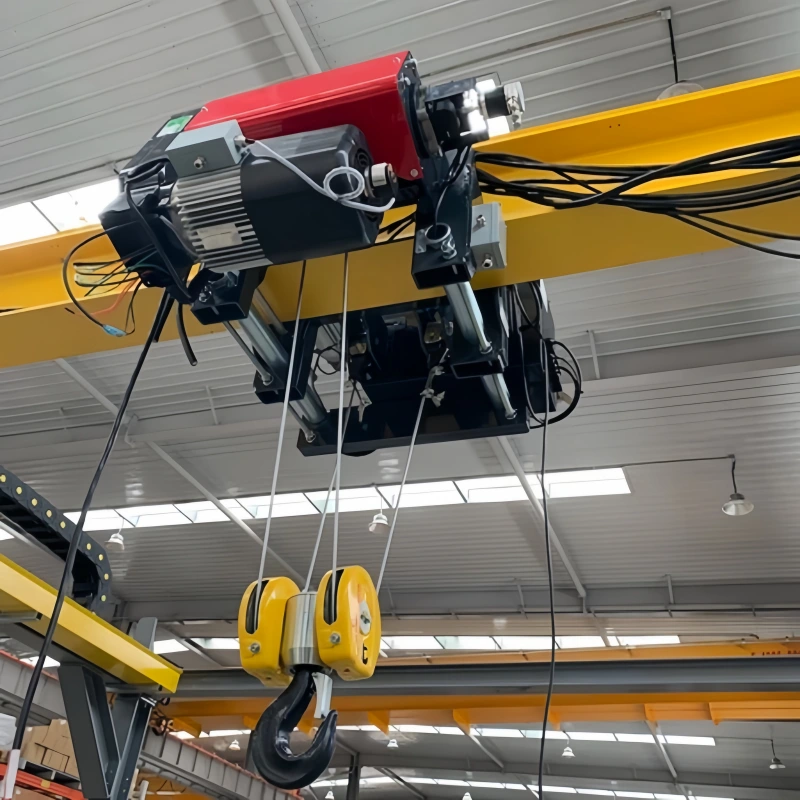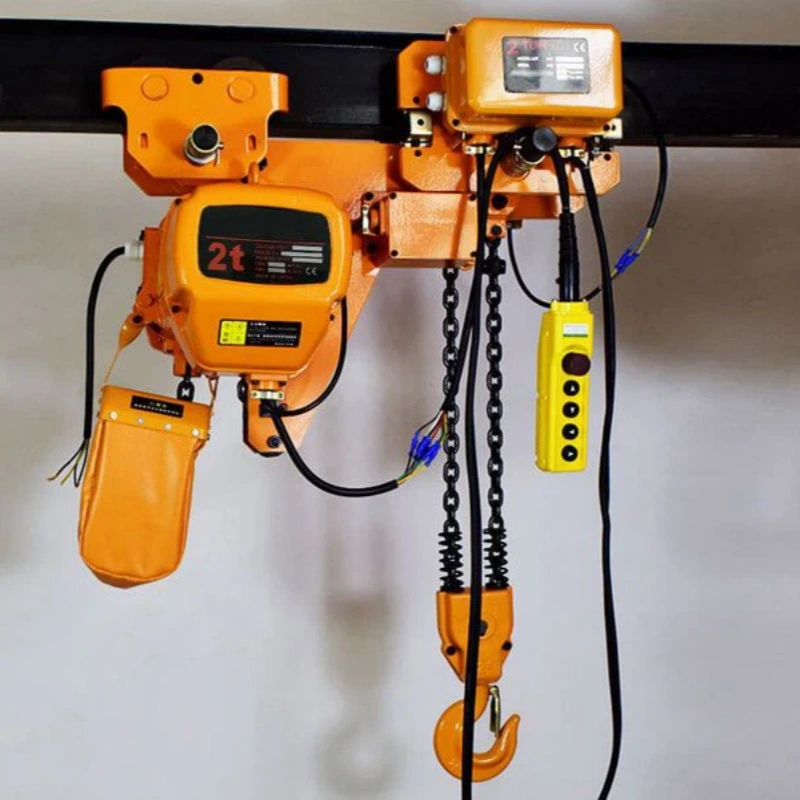If you want to know how to attach a snap hook to a rope, you usually start by creating a secure loop, threading it through the snap hook, and fastening it tightly.
A strong connection keeps your gear safe, whether you’re climbing, camping, or working on a job site. Snap hooks show up everywhere—from backpack gear and safety harnesses to mooring lines and assembly lines. Here’s a quick look at where you might use them:
Industry | Applications |
|---|---|
Manufacturing | Connecting tools or safety equipment |
Aerospace | Securing cargo and equipment |
Automotive | Safety harnesses and cargo |
Outdoor | Climbing, camping, and backpacks |
For peace of mind, you want hardware you can trust. Powerful Machinery delivers certified, high-performance rigging solutions trusted by professionals worldwide.
Key Takeaways
Choose the right rope type for your task. Nylon is great for heavy loads, polyester resists UV damage, and polypropylene floats on water.
Use secure knots like the bowline or anchor hitch for strong connections. These knots hold tight and are less likely to slip.
Consider splicing for the strongest connection. Splicing maintains more of the rope’s strength compared to knots.
Always check your snap hook and rope connection for security. Inspect for wear, rust, or fraying before each use.
Select certified hardware from trusted brands. This ensures safety and reliability for your tasks.
Materials and Tools
Before you start attaching a snap hook to a rope, you need the right materials. Here’s what you should have on hand:
Rope (choose the right type for your job)
Snap hook (make sure it’s strong and corrosion-resistant)
Lighter (for sealing rope ends)
Optional hardware (thimbles, clamps, or certified fittings)
Gloves (for safety and grip)
Tip: Always check that your snap hook has a minimum tensile strength of 5,000 lbs and a smooth finish. This helps prevent damage and keeps your setup safe.
Rope Types
Picking the right rope makes a big difference. You’ll find nylon, polyester, and polypropylene ropes in most stores. Each type has its own strengths and weaknesses. Take a look at this comparison:
Rope Type | Strength Characteristics | Durability Characteristics |
|---|---|---|
Nylon | Excellent shock absorption, ideal for sudden loads | Susceptible to UV degradation, less durable in sunlight |
Polyester | Strong grip for knots, stable under load | Superior UV resistance, low water absorption, more durable |
Polypropylene | Lightweight, floats on water | Moderate durability, less effective in UV exposure |
If you’re working outdoors, polyester ropes hold up best under sunlight. Nylon works well for heavy loads but can wear out faster in direct sun. Polypropylene floats, so it’s handy for water jobs.
Snap Hook Options
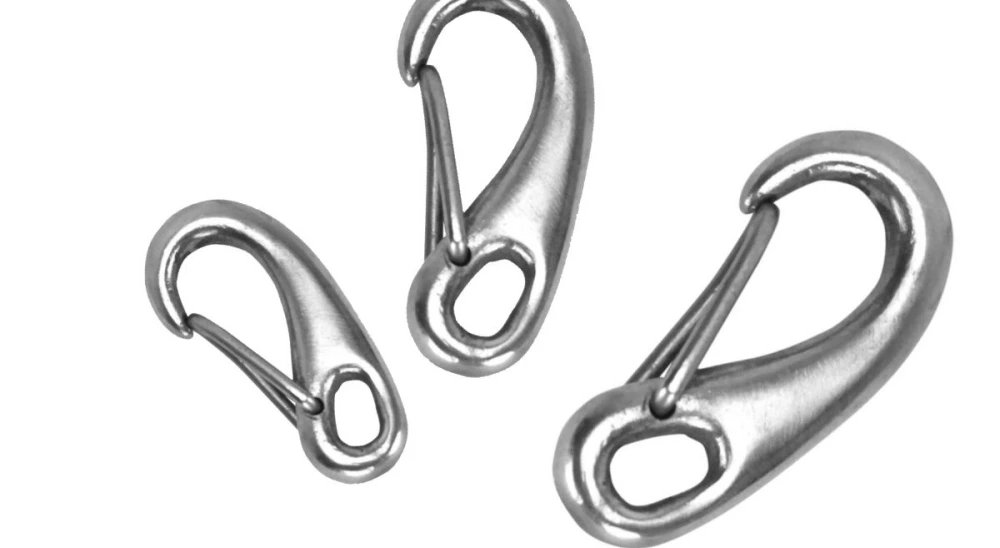
Snap hooks come in several styles. You’ll want to match the hook to your rope and task. Here’s a quick guide:
Snap Hook Type | Description |
|---|---|
Panic Snaps | Instant release, popular in marine settings. |
Heavy-Duty Snaps | Built for strength, follow ANSI guidelines. |
Trigger Snaps | Easy one-handed use, prevents accidental opening. |
Bolt Snaps | Button-operated, less secure than trigger snaps. |
Locking snap hooks offer extra safety. Triple-locking mechanisms work best for life support. Non-locking hooks can open by accident, so use them only for light-duty tasks.
Tools from Powerful Machinery
You want tools that last and meet strict standards. Powerful Machinery supplies certified hooks and fittings made from Grade 100 alloy steel. These tools meet high industry standards and work well for lifting and rigging.
Tool Type | Material | Certification/Standard |
|---|---|---|
Grade 100 hooks and fittings | High-quality Grade 100 alloy steel | Meets high industry standards |
Twist Lock Cradle Grab Hooks | High-quality Grade 100 alloy steel | Meets high industry standards |
Twist Lock Non-Cradle Grab Hooks | High-quality Grade 100 alloy steel | Meets high industry standards |
You can trust Powerful Machinery for reliable gear. Their products go through tough testing and carry certifications like ISO9001 and TUV Rheinland. When you use their hardware, you know your setup meets global safety standards.
How to Attach a Snap Hook to a Rope?
You want to know how to attach a snap hook to a rope and make sure it stays secure. Let’s walk through the most reliable methods, so you can pick the best one for your job. Each technique has its own strengths, and you’ll find tips for safety and durability along the way.
Loop-Through Technique
This is the simplest way to attach a snap hook to a rope. You don’t need any extra tools or hardware. Here’s how you do it:
Thread the end of your rope through the eye of the snap hook.
Pull enough rope through to create a loop.
Pass the end of the rope back through the loop you just made.
Pull tight to cinch the loop around the snap hook’s eye.
Tip: Use a lighter to carefully melt the rope’s end after tying. This prevents fraying and keeps your connection neat.
This method works best for temporary setups or light loads. Always check the loop for tightness before you use it.
Knot Methods
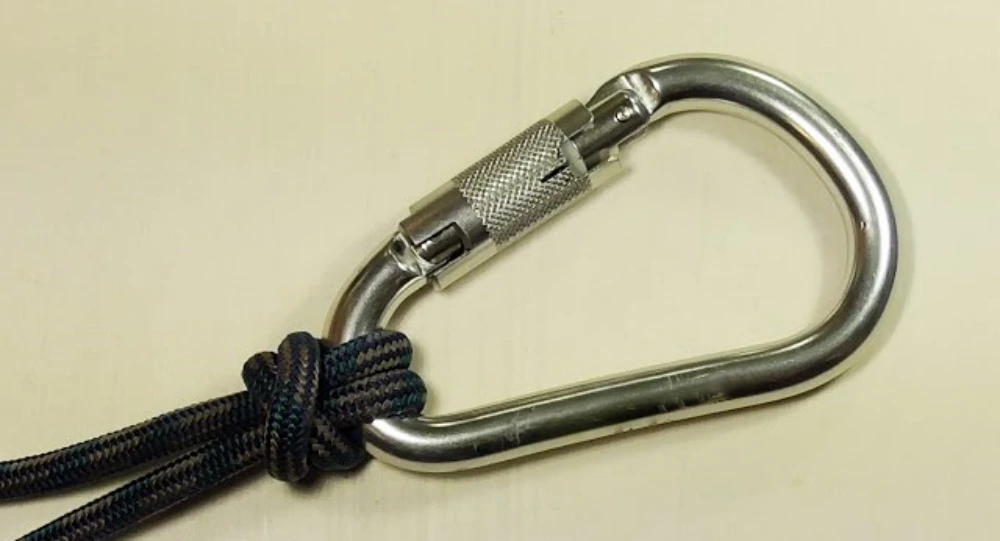
Knots give you a strong and flexible way to attach a snap hook to a rope. Some knots hold better than others, so let’s look at the most secure options. Here’s a quick comparison:
Knot Type | Description |
|---|---|
Anchor Hitch | Also called the Fisherman’s Hitch. Great for tying an anchor line to a snap hook or anchor. |
Bowline Knot | Makes a secure loop at the end of your rope. Perfect for mooring or rescue work. |
Double Fisherman’s | Two strangle knots tied around each other. Best for joining two ropes, but can also secure a hook. |
You might wonder which knot holds the strongest. Here’s a table showing how much strength each knot keeps:
Knot Type | Strength Retained (%) |
|---|---|
Bowline | 67-75 |
Fisherman’s Knot | 50-58 |
Anchor Bend | 55-65 (5/8″ ring) |
80-90 (4″ diameter) |
How to tie a Bowline Knot:
Make a small loop near the end of your rope.
Pass the rope’s end through the loop from underneath.
Wrap the end around the standing part of the rope.
Bring the end back down through the loop.
Pull tight to form a fixed loop.
How to tie an Anchor Hitch:
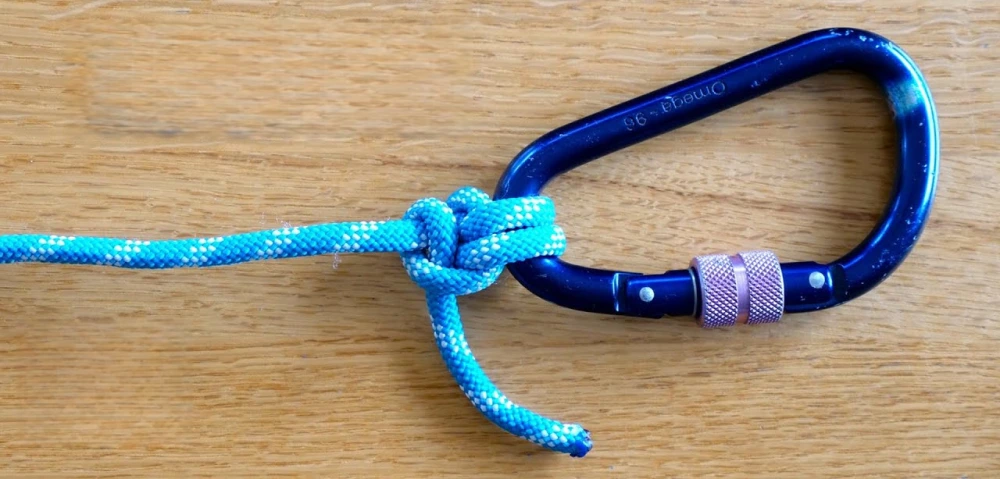
Pass the rope through the snap hook’s eye twice.
Wrap the end around the standing part.
Tuck the end under the last wrap.
Pull tight.
Safety Note: Always check your knot for tightness and security before putting weight on it. If you see any slipping, retie the knot.
Powerful Machinery offers high-quality ropes that work well with these knots. Their certified ropes and snap hooks give you extra peace of mind for heavy-duty jobs.
Splicing
If you want the strongest connection, splicing is the way to go. Splicing weaves the rope’s strands back into itself, making a permanent loop for your snap hook. This method keeps more of the rope’s original strength than knots.
Knots can lower your rope’s strength to less than 20% of what it started with.
Splices keep a much higher percentage of the rope’s strength.
A well-done knot might keep about 35% of the rope’s strength, but a splice does even better.
How to splice a rope for a snap hook:
Unwind the rope’s end into three strands.
Pass the strands through the snap hook’s eye.
Weave each strand back into the standing part of the rope, following a standard eye splice pattern.
Pull everything tight and trim any excess.
Tip: If you’re not sure how to splice, ask a pro or use a splicing kit. Powerful Machinery’s ropes are designed for easy splicing and maximum strength.
Hardware Options
Sometimes you need extra security or want a fast, professional finish. Hardware like clamps and thimbles can help you attach a snap hook to a rope with confidence.
EZ Snap Hooks: Made from high-grade aluminum, these hooks resist rust and fit ropes up to 1/4″. You can bolt them in place for extra stability.
Grommet Clamps: These come in packs and clamp your rope securely, making the connection even stronger.
Thimbles: Place a thimble inside the rope loop to protect it from wear and tear. This is great for heavy loads or repeated use.
How to use hardware:
Slide a thimble into the loop you want to make at the rope’s end.
Pass the rope through the snap hook and around the thimble.
Use a clamp to secure the rope’s end to the standing part.
Tighten the clamp with a wrench.
Pro Tip: Powerful Machinery supplies certified clamps, thimbles, and snap hooks. Their hardware meets strict safety standards, so you can trust your setup in tough conditions.
No matter which method you choose, always double-check your work. Give the snap hook a firm tug before you use it. If you see any slipping or loose ends, fix it right away. Now you know how to attach a snap hook to a rope using the best techniques for strength and safety.
Safety and Troubleshooting
Checking Security
You want your snap hook and rope connection to stay secure every time. Start by inspecting all metal parts for cracks, bends, or rust. Look at the snap hook’s gate and make sure it closes smoothly.
Check the rope for broken strands or fraying. If you use a lanyard, confirm it can hold your weight. Here’s a quick table with best practices for checking security:
Best Practice | Description |
|---|---|
Corrosion-resistant finish | Snap hooks should resist rust and feature smooth surfaces. |
Minimum tensile strength | Snap hooks must be capable of holding at least 5,000 lbs. |
Locking snap hooks | Use the correct size to prevent accidental opening. |
Connection guidelines | Only connect snap hooks to ropes if they are designed for it. |
Avoid connecting snap hooks | Never link snap hooks to other hooks or overloaded D-rings. |
If you use certified products from Powerful Machinery, you get hardware that meets strict safety standards. Their snap hooks and ropes are tested for strength and reliability.
Common Mistakes
Mistakes happen, but you can avoid most of them with a few simple checks. Many people connect snap hooks to weak structures or use hooks without a locking mechanism.
Sometimes, snap hooks get attached to other hooks or overloaded anchor points. These errors can lead to falls or injuries. Here’s what you should watch out for:
Using snap hooks without a corrosion-resistant finish.
Choosing hooks with less than 5,000 lbs tensile strength.
Skipping the locking feature for safety-critical jobs.
Connecting snap hooks directly to rope or webbing not designed for it.
Linking snap hooks to other hooks or crowded D-rings.
If you anchor below the D-ring, you risk a longer fall. Always use certified anchorage points and make sure the geometry of your setup keeps the gate from bearing on the anchor.
Fixing Loose Attachments
If your snap hook feels loose or starts to slip, act fast. First, check the knot or splice and retie it if needed. You can switch to a locking carabiner for extra security. If the snap hook shows wear, replace it or add a backup.
For a temporary fix, use a split keyring to tighten the connection. Always inspect your setup before each use. When you follow these steps, you know how to attach a snap hook to a rope and keep it secure.
Safety Tip: Certified products from Powerful Machinery meet international standards like ANSI Z359.1 and ISO9001. Choose these for critical jobs and peace of mind.
Conclusion
You now know how to attach a snap hook to a rope using safe and reliable methods. Pick the right technique for your task and always use quality gear. Check out this table to see why product choice matters:
Requirement | Description |
|---|---|
Corrosion Resistance | Prevents rust and damage |
Minimum Strength | Holds at least 5,000 lbs |
Locking Mechanism | Stops accidental opening |
When you choose trusted brands like Powerful Machinery, you get safety, durability, and efficiency. Many professionals have seen faster, safer results with their products, from deepwater installations to marine projects.
FAQ
How do you know which snap hook size fits your rope?
Check the rope’s diameter. Match it with the snap hook’s eye size. If you use a rope that’s too thick or thin, the connection won’t stay secure. Always read the product specs before you buy.
Can you use any knot to attach a snap hook?
No, not every knot works. Choose knots like the bowline or anchor hitch. These knots hold tight and don’t slip. Avoid simple overhand knots because they can loosen under load.
What should you do if your rope starts to fray near the snap hook?
Use a lighter to melt the rope’s end. This seals the fibers and stops fraying. If the damage looks serious, replace the rope. Frayed rope can fail when you need it most.
Is it safe to use snap hooks for climbing or rescue work?
Only use certified snap hooks for climbing or rescue. Look for products with safety ratings and locking mechanisms. Powerful Machinery offers certified gear that meets strict standards for critical jobs.
Do you need extra hardware like thimbles or clamps?
Extra hardware helps protect your rope and makes the connection stronger. Thimbles prevent wear at the loop. Clamps keep the rope from slipping. For heavy-duty tasks, you should use these accessories.

